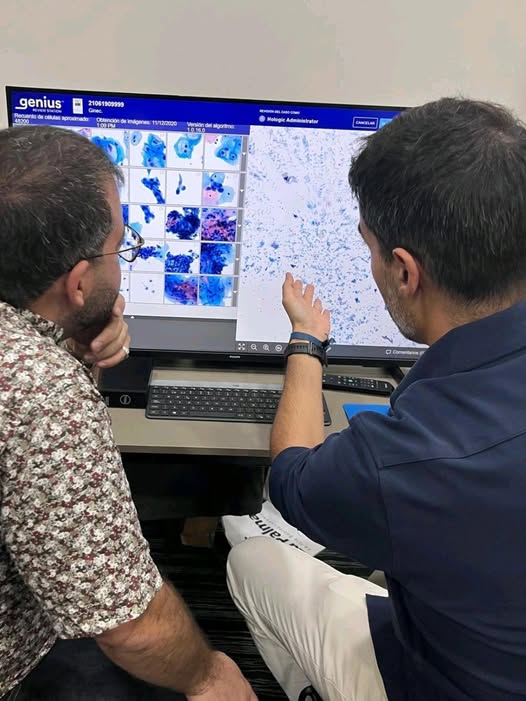MICROSCOPICAL EVALUATION OF HEMATURIA
Hematuria that is not explained by an obvious underlying condition (eg, cystitis, ureteral stone) is fairly common. In many such patients, particularly young adult patients, the hematuria is transient and of no consequence On the other hand, there is an appreciable risk of malignancy in older patients (eg, over age 35 years) with hematuria, even if transient . However, even among older patients, a urologic cause for the hematuria can often not be identified (61 percent in a series of 1930 patients referred to a hematuria clinic) .
Hematuria Manifestation
Hematuria is a common manifestation of urinary tract disease and its incidence increases with age. The possibility of discriminating the origin of hematuria between glomerular and non-glomerular sites has recently permitted a more rational investigation of its etiology. During their passage through the nephron, the erythrocytes are subjected to various influences resulting in changes of membrane morphology and hemoglobin content. Of the various dysmorphic erythrocytes which have been described, the acantshocytes are the most specific marker of glomerular hematuria.
Glomerular hematuria may present clinically as (a) persistent microscopic hematuria, (b) persistent microscopic hematuria with proteinuria, (c) acute microscopic hematuria with proteinuria, (d) recurrent macroscopic hematuria with or without proteinuria and (e) loin-pain-hematuria syndrome. The most common disease associated with hematuria of the first category is IgA nephropathy, followed by certain forms of hereditary glomerular disease (Alport's syndrome and thin basement membrane nephropathy).
In the second category the diagnostic approach is based on the degree of proteinuria and the level of renal function, but in most of these cases renal biopsy is necessary. Hematuria of the third category constitutes the main clinical manifestation of the acute nephritic syndrome, which must be investigated etiologically. The fourth category of glomerular hematuria essentially coincides with IgA nephropathy, which, together with thin basement membrane nephropathy and certain idiopathic cases, constitutes the main cause of the fifth category.
The investigation of non-glomerular hematuria is based on the patient's age. Thus, in individuals younger than 45 years, in whom neoplasms are uncommon, the laboratory diagnostic tests include X-ray of kidney-bladder-prostate, culture of urine or prostatic secretion, measurement of calcium and uric acid in a 24-hour urine collection, cytologic examination of urine and intravenous pyelography, in that order. Conversely, in persons over 45 years old the investigation must be more thorough including, in order, X-ray, ultrasonography of kidney, intravenous pyelography, cytologic evaluation of the urine, cystoscopy, computerised tomography, testing for calciuria and uricosuria and in selected cases, magnetic resonance imaging or angiography.
Health Tips
Common Causes of Glomerular Hematuria
IgA nephropathy (Berger's disease)
Thin glomerular basement membrane disease
Hereditary nephritis (Alport's syndrome)
Berger's disease is the most common cause of asymptomatic glomerular microhematuria and, in the absence of significant proteinuria, typically follows a benign course. There is no proven treatment for the condition although fish oils may benefit patients with progressive disease.
Causes of non-glomerular hematuria are often classified by location. The more commonly encountered upper and lower urinary tract etiologies are listed in Table 3. Although transitional cell carcinoma involving the urinary bladder is the most common malignancy discovered in patient's with asymptomatic microhematuria, a benign process is far more the more likely explanation for the problem. In particular, urinary tract infection, urinary tract stones and prostatic enlargement occur more frequently than urologic malignancies.
Common Causes of Non-Glomerular Hematuria
Upper Tract
Urolithiasis
Pyelonephritis
Renal cell cancer
Transitional cell carcinoma
Urinary obstruction
Benign hematuria
Lower Tract
Bacterial cystitis (UTI)
Benign prostatic hyperplasia
Strenuous exercise ("marathon runner's hematuria")
Transitional cell carcinoma
Spurious hematuria (e.g. menses)
Instrumentation
Benign hematuria (e.g. interstitial cystitis, trigonitis)
Excessive anticoagulation from oral anticoagulation therapy does not lead to de novo hematuria. However, the degree and duration of hematuria from another cause may be influenced by such therapy. American Urologic Association guidelines suggest urologic and nephrogenic evaluation in patients with hematuria on anticoagulation therapy.

